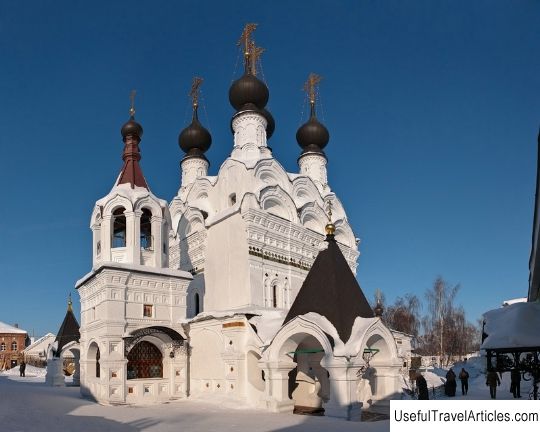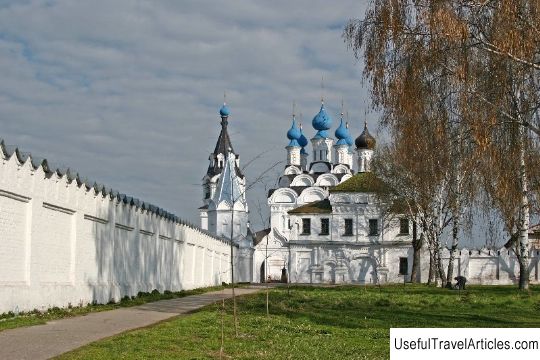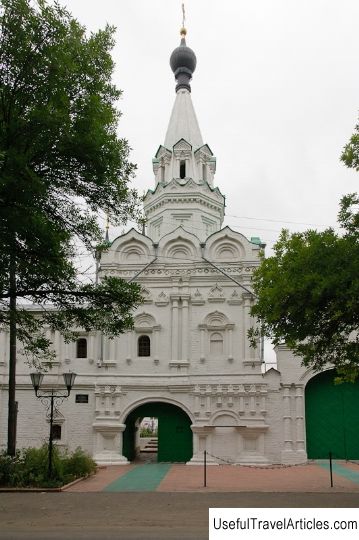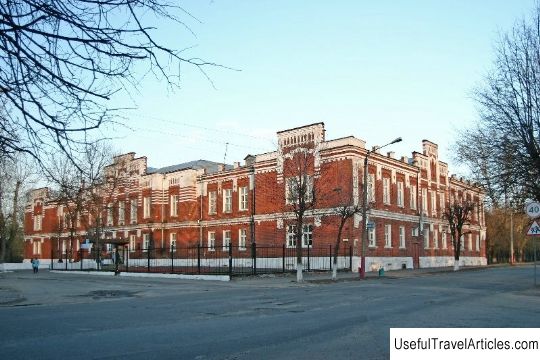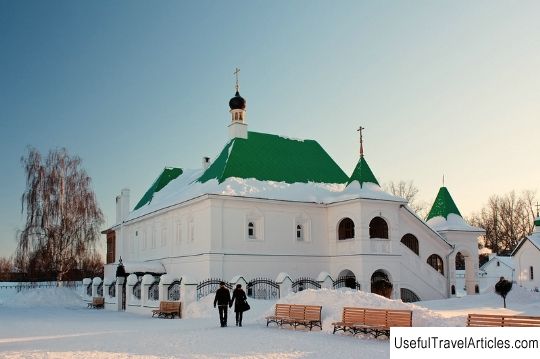Trinity Monastery description and photos - Russia - Golden Ring: Murom
Rating: 8,2/10 (1001 votes) 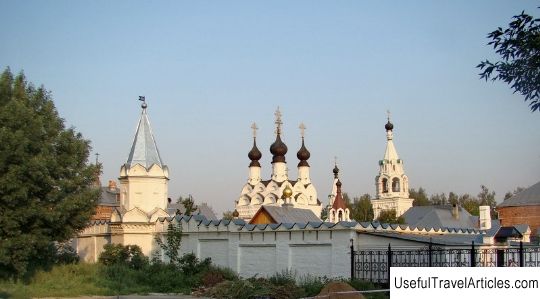
Trinity Monastery description and photos - Russia - Golden Ring: Murom. Detailed information about the attraction. Description, photos and a map showing the nearest significant objects. Photo and descriptionThe Trinity Monastery was created in the 17th century, namely in 1643 at the expense of a wealthy merchant from Murom Tarasiy Borisov, who was nicknamed Bogdan Tsvetnov. After Tarasiy Borisov became rich, he was transferred to the "Moscow hundred" by the decree of the tsar. In old age, Tarasiy returned to Murom again to take tonsure at the Annunciation Monastery, where he wrote "The Story of the Vilna Cross", which was dedicated to the main shrine of the Trinity Monastery. The story says that a man named Vasily came to Tarasiy's house, when he was still a merchant, he brought an extraordinary beauty of a silver cross, bound in gold, adorned with precious stones. Vasily found this cross during the capture of Vilna by the Russian troops and kept it until he was ordered from Heaven to take this cross to Murom, to Bogdan Tsvetnov so that he would hand over this cross to the Trinity Monastery. In our time, the Vilna cross is kept in the local history museum of Murom. The place where the monastery stands was formerly called the Old Vyshny Gorodishche. Murom Prince Konstantin erected a wooden church here in honor of Boris and Gleb. In 1351, a tent-roofed Trinity Church was built on this site. In 1642, instead of a wooden church on the market square, the construction of a new stone church in the name of the Most Holy Trinity began - the first church in the city, which was built in the style of “Russian pattern ". It was unusual for the residents of Murom to see the rich decor of the temple, since the former Murom churches looked rather ascetic. Its walls were decorated not only with carved figures, but also with amazing glazed tiles depicting strange birds and plants, warriors on horses and dragons. The drums of the five heads of the church were carved, around which kokoshniks were located. The walls of the quadrangle were also crowned with high kokoshniks. The cathedral was rebuilt several times: in 1786 the gallery and porch were expanded, in 1810 the Skorbyaschensky side-chapel was added. After the construction of the temple, Bogdan Tsvetnov was given permission to create a monastery here. So the Trinity Church turned into a monastery cathedral, around which large-scale construction began. In 1648, a tent-roofed Kazan gateway church and a tent-roofed bell tower were built, which in their decoration almost surpass the cathedral itself. The Trinity Monastery was supported by the royal family. In 1663 the monastery received a charter, according to which the monastery received possession of the Bobyl yards next to the monastery, and the abbess was exempted from various taxes for household places. In 1805, a fire destroyed the wooden fence of the monastery, two years later in its place, with the donations of Alexandra Dmitrievna Neymanova, the construction of a new stone fence with tent-roofed turrets began. In 1865, Aleksey Vasilyevich Ermakov donated a stone overhead chapel for the construction of a stone chapel on the territory of the monastery, where water was supplied from the city water supply. Now the state of the chapel is unsatisfactory, it is sinking. Soviet times turned out to be very difficult for the monastery. In 1918 the monastery buildings were occupied by workers' apartments, in 1921 the monastery was closed. In the 1930s. the buildings of the monastery were transferred to the military department and used for archives and warehouses. In 1941 g. Trinity Cathedral was given over to a shoemaker, and in the 1960s. the monastery buildings were again turned into apartments. In the 1970s. the ensemble of the Trinity Monastery was recognized as an architectural monument and was taken under state protection. In the 1980s. the wooden church of St. Sergius of Radonezh was brought here from the village. Pyangus of the Melenkovsky district, built in 1715 In the 1990s. the monastery was renewed and became the first nunnery revived in the Vladimir region. There is a shelter for girls "Nadezhda" at the monastery. It was created when several children appeared at the monastery, who had nowhere to go. After the opening of the monastery, the relics of saints Murom - Peter and Fevronia were transferred here from the Annunciation Monastery. At first, the shrine with the relics was located in the Nativity Cathedral - the main city church, subsequently destroyed. After the destruction of the cathedral, the relics were transferred to the museum, where they were kept until the 1990s. Pilgrims come to the monastery all the time to worship the relics of the famous Russian married couple, who are the patrons of the family and marriage.            We also recommend reading Berlin Cathedral (Berliner Dom) description and photos - Germany: Berlin Topic: Trinity Monastery description and photos - Russia - Golden Ring: Murom. |
